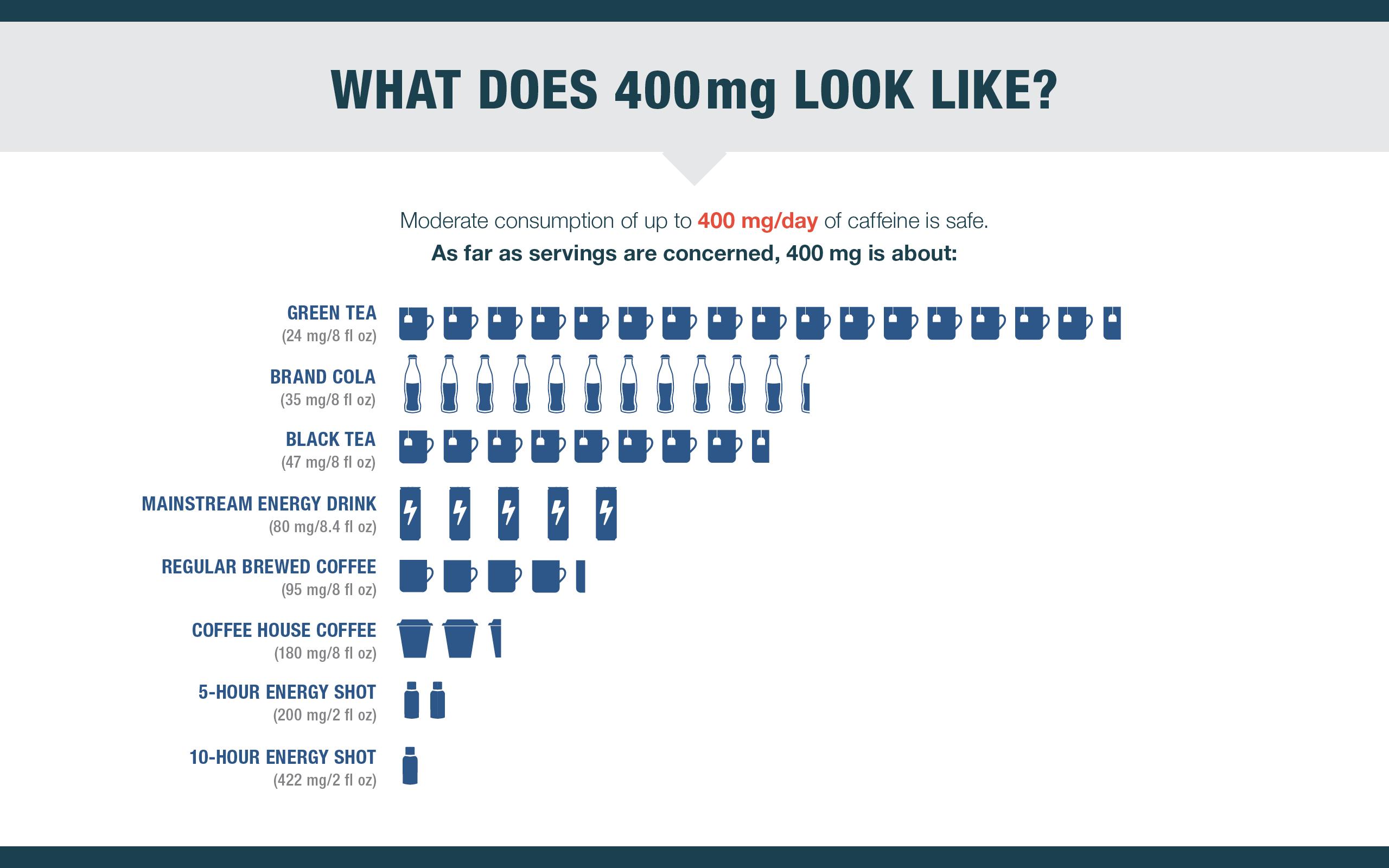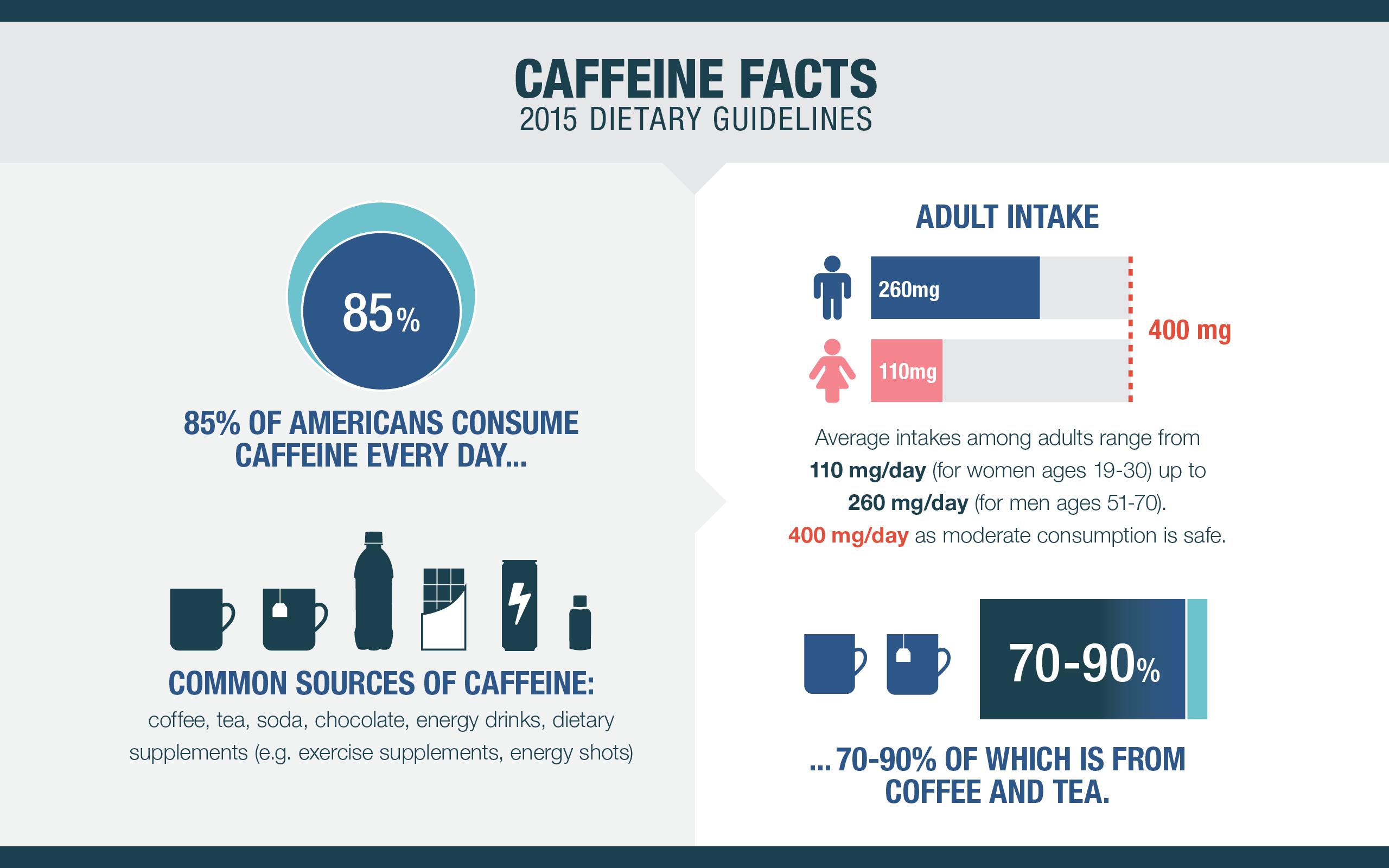Get smart about caffeine – National Consumers League
 March is both Caffeine Awareness Month and National Nutrition Month, an appropriate time to take an updated look at the world’s most consumed “pick-me-up.” Caffeine consumption is widespread in the United States, with 85 percent of the population drinking at least one caffeinated beverage per day. This year, for the first time in its 35-year history, the official U.S. Dietary Guidelines for Americans includes findings and recommendations on caffeine.Here are relevant facts that many Americans might not know about caffeine, including the latest recommendations from the 2015-2020 Dietary Guidelines for Americans.
March is both Caffeine Awareness Month and National Nutrition Month, an appropriate time to take an updated look at the world’s most consumed “pick-me-up.” Caffeine consumption is widespread in the United States, with 85 percent of the population drinking at least one caffeinated beverage per day. This year, for the first time in its 35-year history, the official U.S. Dietary Guidelines for Americans includes findings and recommendations on caffeine.Here are relevant facts that many Americans might not know about caffeine, including the latest recommendations from the 2015-2020 Dietary Guidelines for Americans.
- Caffeine has been consumed by humans for thousands of years. It is reported that tea was first consumed in China as early as 3000 BC, and there is evidence of coffee consumption as early as the 9th century in Ethiopia. So, humanity has had a caffeine predilection for a long time. Caffeine is found naturally in over 60 plants including coffee beans, cocoa beans, tea leaves, kola nuts, yerba mate, and guarana. It is also produced synthetically and added to other products including soft drinks and energy drinks. However, there is no difference between the naturally occurring caffeine in plants and synthetic caffeine.
- Americans are not alone in their enjoyment of a cup of joe! Large parts of the world’s population consume caffeine in one form or another, every day. Countries that consume the most caffeine include places like Sweden, Norway, Denmark, and the Netherlands.
- There appears to be widespread agreement regarding the safety of a moderate daily intake level of caffeine for healthy adults of 400 milligrams (mg). The recently released Dietary Guidelines conclude that moderate coffee consumption (up to 400 mg/day of caffeine) can be part of a healthy diet. Health Canada and the European Food Safety Authority have also declared moderate caffeine intake of up to 400 mg/day safe.

- The vast majority of Americans consume far less than 400 mg/day of caffeine. According to the Dietary Guidelines, average intakes of caffeine among adults range from 110 mg/day (for women ages 19-30) up to 260 mg/day (for men ages 51-70). Average intakes for children (5-32 mg/day) and teens (63-80 mg/day) are lower.
- Consumption has remained consistent. Despite concerns expressed by some about proliferation of caffeine in the food supply, U.S. dietary patterns indicate that caffeine intake has remained steady over the past decade.
- Most of our intake of caffeine in the United States continues to come from coffee, tea, and soda. This is consistent with a recent FDA-sponsored study that found between 70 and 90 percent of caffeine intake is from coffee and tea.
- Consuming 400 mg is probably harder than you think. The Dietary Guidelines confirm that caffeinated beverages can vary in caffeine content. So consumers should be aware of how much caffeine is in commonly consumed beverages. To assist, the following examples illustrate how much you would have to drink to reach 400 mg of caffeine.
- 16.6 servings of green tea (24 mg caffeine/8 fl. oz.)
- 11.5 servings of brand cola (average 35 mg caffeine/8 fl. oz.)
- 8.5 servings of black tea (47 mg caffeine/8 fl. oz.)
- 5 servings of Red Bull energy drink (80 mg caffeine/8.4 fl. oz.)
- 4.2 servings of regular brewed coffee (95.2 mg caffeine/8 fl. oz.)
- 2.2 servings of coffee house coffee (180mg caffeine/8 fl. oz.)
- 2 servings of 5-Hour Energy (200 mg caffeine/2 fl. oz.)
- 1 serving of 10-Hour Energy shot (422 mg caffeine/2 fl. oz.)
- Surprise! The darker the coffee roast, the less caffeine it has. For tea, it’s the opposite: the darker the tea, the higher the caffeine content.
- Caffeine is one of the most thoroughly studied substances in the human diet. Over time, scientists have scrutinized, studied, and dissected caffeine; it has been surveyed, assessed and analyzed by chemists, toxicologists, and statisticians; and importantly, the effects of caffeine have been examined, discussed, and experienced first-hand by the billions of people that consume coffee, tea, chocolate, cola, or energy drinks on a daily basis. While it has been suspected of various harmful effects, for the most part, it has been exonerated. The 2015-2020 Dietary Guidelines finds strong and consistent evidence that moderate caffeine consumption in healthy adults is not associated with an increased risk of major chronic diseases (e.g., cancer, heart disease) or premature death.
- Caffeine isn’t for everyone. There are some people who should limit their caffeine intake. The Dietary Guidelines recommend that pregnant women, those who may become pregnant, and those who are breastfeeding should consult their health care providers for advice concerning caffeine consumption. Although the Guidelines are silent on other populations, everyone is different when it comes to caffeine. Children and teens should generally consume less caffeine due to weight concerns (and parents should monitor). Health Canada, for example, recommends specific ranges for different age groups. In addition, those who are especially sensitive to caffeine may want to limit their intake, and while caffeine is great to help get your morning started, it shouldn’t be used as a replacement for sleep.
- Some animals should not consume caffeine. Dogs, cats, and birds cannot metabolize caffeine, so don’t feed your pets chocolate or anything with caffeine!
- Cold brewed coffee products are gaining popularity. Given the extended steeping time during manufacture and processing, these products tend to have higher caffeine concentrations. An example of this is Chameleon Cold Brew, which contains a huge 2,160 mg of caffeine per 32 fl. oz. bottle. While the product label recommends consuming this as eight servings, it is still an excessive amount of caffeine to have in one container, and amounts to 270 mg per serving.
- Caffeine is sometimes found in surprising places like orange soda, lemonade, and enhanced water beverages.
- Caffeine is caffeine. The Dietary Guidelines treat caffeine holistically, focusing on the ingredient itself, whether naturally occurring, synthetic, or a combination of both–versus individual caffeinated products. We agree with this approach. Caffeine is the same, regardless of the food or beverage.
We believe that all products containing caffeine should declare the amount of caffeine per serving–and per container–on the label. To be able to track caffeine intake, using the 400 mg/day moderate level of intake as a maximum for recommended intake, consumers need to know how much caffeine is in the foods and beverages they consume. But, that can be an issue, particularly for products like energy shots and the new wave of highly caffeinated cold brew coffee products.
FDA currently requires food labels to disclose added caffeine as an ingredient, but the label is not required to provide the amount of caffeine. Very few products voluntarily list the amount of caffeine they contain, although some companies, like Red Bull and Monster, and some soft drinks, provide this information voluntarily. Because caffeine is not a nutrient, it is not listed in the Nutrition Facts label. But, would it be so hard to provide caffeine content elsewhere on the information panel?
As in all things, a little common sense goes a long way and sensitivity levels can vary from person to person. We likely all know someone who can drink an espresso after dinner and still fall asleep, while other friends may not be able to drink a Diet Coke in the afternoon without it affecting their sleep quality. Let your individual sensitivity to caffeine be your guide.

National Nutrition Month is an annual initiative led by the Academy of Nutrition and Dietetics.
DISCLOSURE: while researching facts for this blog, approximately 220 mg of caffeine (3 cappuccinos) was consumed.












